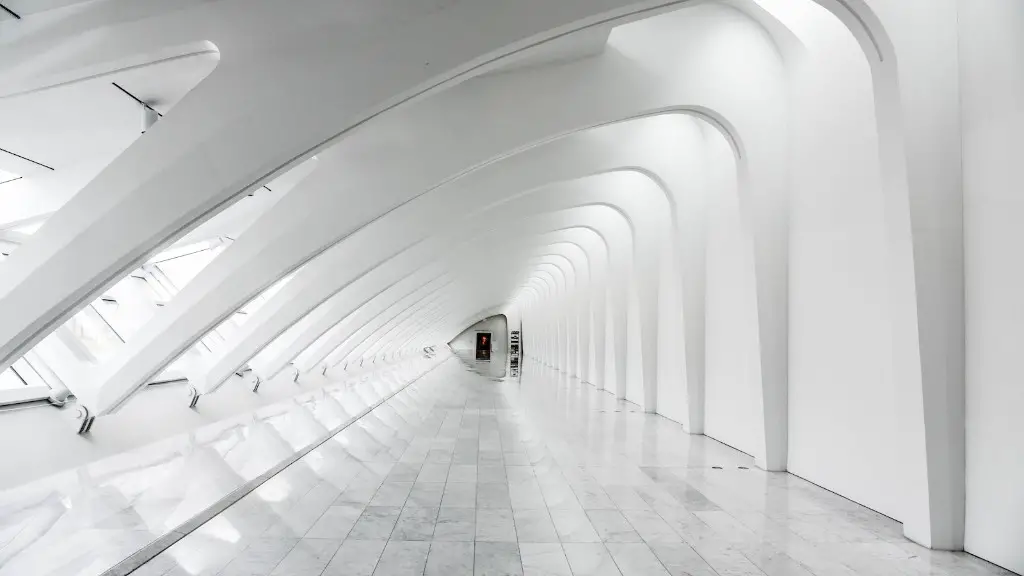Introduction
New York City is one of the most vibrant and bustling cities in the world. Its architecture is a reflection of its past, present, and future. From the Empire State Building and the Chrysler Building to the Statue of Liberty and Central Park, New York City has an array of iconic architectural marvels. But what makes New York’s architecture unique compared to other cities? Why is it so captivating? This article will explore the history and evolution of New York’s architecture, highlighting the importance of its diverse and innovative designs.
Development of Early Skyscrapers
New York City is known for its impressive skyline of skyscrapers and modern buildings. This was made possible by the development of early skyscrapers, which began during the late 19th century. In response to the population boom in the city, the demand for office and residential space led to the construction of tall buildings. The tallest building of the time was the World Building, built in 1890. This marked the beginning of the city’s journey towards vertical expansion.
The Chicago School of Architecture, which developed during the same period, had a profound influence on New York architecture. The “Chicago Style” of skyscrapers was characterized by its use of steel-frame construction. This revolutionized the way taller buildings could be constructed in New York. As a result, by the early 20th century, many of the city’s most iconic skyscrapers had been built. This includes the Woolworth Building, the Flatiron Building, the Empire State Building, and the Chrysler Building.
Saving Historic Buildings
Not all of New York City’s architecture consists of tall, modern skyscrapers. Historic preservation has played a critical role in protecting and restoring the city’s most iconic landmarks. Examples of these include The Brooklyn Bridge, Grand Central Station, and the Statue of Liberty, which have all been preserved and restored to their original grandeur. This effort has been made possible by multiple organizations and non-profits, such as the Landmarks Preservation Commission and the Municipal Art Society. These groups have worked tirelessly to ensure that New York City’s history can continue to be appreciated by future generations.
Contemporary Architects and Designers
The past few decades have seen a surge in the creativity and innovation of architects and designers in New York City. This includes the likes of Frank Gehry, Santiago Calatrava, and Renzo Piano, who are all well-respected practitioners in their respective fields. Their work has resulted in the construction of some of the world’s most impressive buildings, such as the Guggenheim Museum, the New York Times Building, and the Vessel. These structures have provided invaluable additions to the city and have highlighted the potential of modern architecture.
Exploring Green Architecture
In recent years, green architecture has become increasingly popular in New York City. This style of architecture seeks to reduce the environmental impact of buildings, through the use of sustainable materials and energy-efficient design. This includes the use of renewable energy sources, energy efficient lighting, and the promotion of green spaces. The city has committed to investing in green architecture and urban design, in order to reduce its environmental footprint. This includes projects such as the Green Roof Initiative, which will retrofit existing buildings with energy-saving green roofs.
Benefiting from Its Diverse Architecture
New York City’s array of architecture is a prime example of a vibrant, diverse environment. This is evident in the styles of the buildings, ranging from historic landmarks to futuristic, eco-friendly designs. This diversity provides a unique experience for visitors and locals alike, who can explore the different styles and eras of the city’s history. This variety ensures that people of all ages and backgrounds can appreciate the city’s architecture.
Community Engagement in Design
Community engagement is also an important part of New York City’s architecture. This is manifested in the city’s public plazas and spaces, which provide spaces for locals to congregate and share ideas. Furthermore, the city’s various museums and galleries also allow for community members to come together and share their perspectives on art. This engagement helps to further foster diversity and encourages people of all backgrounds to be involved in the city’s various initiatives and projects.
Integrating Technology Into Architecture
Technology has also been increasingly integrated into New York City’s architecture. This includes the use of energy-saving glass façades, which allow for improved ventilation and energy efficiency. Smart buildings have also been developed, which utilize sensors and automation to optimize spaces and save energy. This integration of technology has allowed the city’s design to be more efficient and sustainable, while also providing an enriching experience for its users.
Integrating Nature Into Design
In addition to technology, New York City’s architecture has also looked to incorporate nature into its designs. This includes the development of “green” buildings, which make use of sustainable materials and energy-efficient design. This also includes the use of green roofs, which bring vegetation and wildlife into urban spaces. These initiatives further promote sustainability and create more enjoyable, livable spaces for locals and visitors alike.
Celebrating Its Diversity
New York City’s architecture is a testament to its diverse culture and spirit. Its impressive skyscrapers and iconic landmarks are a reflection of its past, present, and future. This combination of innovation and history makes New York’s architecture particularly captivating and provides a truly unique experience. From its historic preservation efforts to its contemporary designs, New York City is sure to remain an architectural marvel for years to come.


